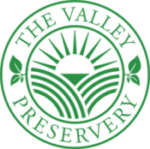Books and Websites:
There are many books and websites related to canning and food preservation in general. I chose only those that are modern and authoritative. That means that the resources provide science-based information and methods, and all recipes are developed in a test kitchen where acidity levels and processing times can be evaluated.
America’s Test Kitchen, 2016. Foolproof preserving: A guide to small batch jams, jellies, pickles, condiments & more.
I have a few of America’s Test Kitchen cookbooks all of which are great. This book is not exception. The introduction on the science and basics of preserving is one of the best around. I particularly like this book for less common suggestions like enhancing pectin in jams using grated Granny Smith apple. Who knew? And it works without detracting anything from the flavour of the jam. The only limitation for we Canadians is that they recommend “Sure Jell” as the preferred pectin and it isn’t available in Canada. I have recently asked a friend to bring some home which she has done. I’ll report on the “pectin challenge” later. Still, a good resource with inventive recipes.
Ball, 2016. The All New Ball Book of Canning and Preserving
This is one of my favorite books. It is comprehensive, includes modern recipes and also provides excellent ideas for using preserved foods. Ball, of course, is one of the long-standing giants in the preserving world. This book is an excellent resource for preservers. Ball could improve its web presence so it not one of the websites I’d recommend.
Bernardin 2006. Bernardin Complete Book of Home Preserving
Bernardin is Canada’s major, well only, preserving company offering products, recipes and how-to videos. Their book is a must-have for Canadian preservers. To be honest, I would like to see an update of the book, giving it a more current vibe with recipe ideas as Ball does. That said, I find the Bernardin website to be very useful. www.berndarin.ca
Canadian Living Test Kitchen, 2012. The Complete Preserving Book
Canadian Living is really Canada’s equivalent to Test Kitchens of America. This book is a great resource for preservers. It is modern, creative and informative. Every recipe I have tried has been very successful. There are also preserving recipes in Canadian Living’s cookbooks but this is a super book to have for all of us Canadians!
Cornell University, Cooperative Extension: http://ccesaratoga.org/nutrition-food/food-preservation
Cornell is one of the American universities that support food preservation learning through their extension programs through New York State. I am a Certified Master Food Preserver through this program but there are many across the US. Their food related programs are fairly extensive and during the pandemic, they have been offering Zoom courses (but the not the Master Food Preserver program). The website is a very useful resource.
Healthy Canning: https://www.healthycanning.com/
This is a top-notch website filled with up-to-date information on the science of preserving, recipes, international resources and more. It’s extremely useful for how-to’s, recipes, preserving questions with answers from food scientists across the US. If you are interested in the Master Food Preserver programs, Healthy Canning has a full inventory. Sadly, there are no such programs in Canada. This is the best food preservation website, hands down!
Katz, Sandor (2016). Wild Fermentation: The Flavor, Nutrition, and Craft of Live-Culture Foods.
Sandor Katz is probably the most well-known scholar, writer, teacher and proponent of fermented foods. His books are stepped with history, culture, science and instruction on the huge array of fermentation. From fermented vegetables, to dairy, breads, vinegars, drinks and more, this is a must-have for those of us interested in fermentation as a method of food preservation.
National Centre for Home Food Preservation: https://nchfp.uga.edu/
In the US, many universities have food science programs conducting research on home food preservation theory and practice. The most current information about food preservation is consolidated at the National Centre for Home Food Preservation which is housed at the University of Georgia. This is the go-to website to keep up with new knowledge and to learn evidence-based methods for various food preservation methods. It’s not the snazziest website, but excellent all the same.
Topp, E. & Howard, M. (2012). Preserving Made Easy: Small Batches & Simple Techniques.
If you are Canadian and have been preserving for a while, you will recognize these authors from their previous books “Put a Lid on It” and “More Put a Lid on It”. These books were the major Canadian preserving resources. This more recent book is just as good in terms of content. Many simple and tasty recipes. Want to make your own pectin? This is where to turn. The only limitation is the actual physical design of this book. It is small and hard to keep open when it’s being used. With that limitation aside, this book is filled with tested & innovative recipes.
University of Georgia, Cooperative Extension, (2014). So Easy to Preserve, 6th ed.
As mentioned, the National Centre for Home Food Preservation is housed at the University of Georgia. The “So Easy to Preserve” book is based on the current science and is the most comprehensive preserving book around. There are no fancy pictures, but it is chock-full of fantastic recipes including many for those of you who are pressure canners and are looking for detailed how-to’s on canning fish, meat, poultry, vegetables, soups/stocks and so on. There are excellent tips in this book. To order: https://setp.uga.edu/
